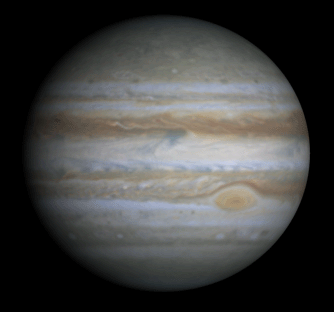Jupiter's Great Red Spot will disappear in the next 10 years
The storm – the largest in the solar system – is about to calm down and will eventually cease to exist.
The solar system's largest and most ferocious storm is finally calming down and it could be entirely gone in about 10 years. Jupiter's Great Red Spot (GRS), a defining feature of the planet, is losing its intensity by the day, according to reports.
The GRS is actually a hurricane-like storm that has been roiling in the planet's atmosphere for about 188 years now, reported Newsweek. The eye of the storm was first observed in the 19 century, with its size over twice the width of the Earth. However, it has already shrunk to about 10,000 miles across – 1.3 times the Earth's diameter.
Since 1979, when the Voyager spacecrafts passed by the gas giant, the storm has shrunken by one-third in width and one-eighth in height. "In truth, the GRS [Great Red Spot] has been shrinking for a long time," said Glenn Orton, lead Juno mission team member and planetary scientist at Nasa Jet Propulsion Laboratory.
"The GRS will, in a decade or two, become the GRC (Great Red Circle). Maybe sometime after that, the GRM – Great Red Memory," he added.
On why the GRS lasted as long as it did, Orton explained, "Think of the GRS as a spinning wheel that keeps on spinning because it's caught between two conveyor belts that are moving in opposite directions. The GRS is stable and long-lived, because it's 'wedged' between two jet streams that are moving in opposite directions."

Powerful jet streams kept fuelling the spin of the storm and the thousands of miles of atmosphere kept the storm active for nearly 200 years.
In contrast, the Earth's storms, even the massive ones, usually do not last longer than a few weeks, noted the report. Our planet's atmosphere, especially the region where all the weather phenomena take place, is relatively close to the surface and water bodies. The rotation of the planet is also slower than that of Jupiter. All of these factors result in the Earth not witnessing very dramatic storms.
The report also mentioned that the Great Red Spot might have been under observation from the mid-1600s. Italian astronomer Giovanni Cassini noted a permanent spot on Jupiter which was seen till 1713. However, there is no way to be sure if this is the same feature.
Since 1830, the Great Red Spot has been observed and studied, but it will be gone in the next 10 years.
"Nothing lasts forever," Orton added.






